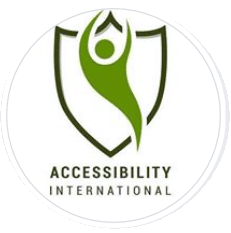Missing the mark(et)
What if you could increase your market share by 10-15%, and reap the benefits of improved SEO at the same time? You can do so just by including a sector of the market many organizations don’t take into consideration: customers who are blind or have low vision. Don’t think you have any customers with visual disabilities? If your website isn’t fully accessible, you won’t have any blind or low vision customers who use assistive technology because they can’t access your information. But you can capture that sector by making sure your website and all its collateral are accessible — and boost your SEO at the same time. And you will also avoid the looming threat of ADA digital accessibility lawsuits, which have been increasing over the last five years.
What is the market share for people with visual disabilities?
In 2018, Disability Magazine published an article claiming there are 64 million people with at least one disability in the United States, and approximately 35 percent of this population is of working age (ages 16–65) and earns income through employment or supplemental support and benefits. While working-age people with disabilities have, on average, a lower annual income than people without disabilities, the report finds they still have significant spending power:
- The total disposable income (after taxes) for U.S. adults with disabilities is about $490 billion, which is comparable to other significant market segments, such as African Americans ($501 billion) and Hispanics ($582 billion). ; and
- Discretionary income (after taxes and essentials like food and housing) for working-age people with disabilities is about $21 billion, which is greater than that of the African-American ($3 billion) and Hispanic ($16 billion) market segments, combined.
“Even with a lower overall income, adults with disabilities, as a group, have a lot of spending power,” Shaewitz said. “However, understanding and serving these consumers may require business and industry to make changes to some of their practices.”
According to the American Foundation for the Blind, findings from the 2018 National Health Interview Survey (NHIS) data release established that an estimated 32.2 million adult Americans (or about 13% of all adult Americans) reported they either “have trouble” seeing, even when wearing glasses or contact lenses, or that they are blind or unable to see at all.
That’s not such a small market share after all. Let’s look at the issues and then how to capture that sector.
What are some of the issues and what should you do?
Color contrast and fonts
It’s important to take into account the color contrast of text and backgrounds, as well as fonts. This is true not only for people with visual disabilities but also for other website visitors using a small screen or experiencing environmental glare. Use san serif fonts for easy readability, and highly contrasting colors so that your content can reach everyone.
Navigation
One of the biggest issues for people using assistive technology to access digital information is navigation. Sighted customers will use visual cues like bolded text, background cues and are able to skim down a page to find the information they need quickly. Assistive technology users need digital headings (not just bold fonts – they often can’t see that) so they can find what they need.
Button and link labels
Assistive technology users need to know what each button on your website does and where all links go. All buttons need to be clearly labeled with digital tags so someone using assistive technology knows it is the “Buy” button or the “save for later” button or the “submit” button. All links need to be attached to descriptive text so it’s clear where the link leads. Don’t just post a URL string. Link the URL to text that says where the person clicking the link will end up.
Online documents
Even if your website is accessible, if you have documents living on your website (maybe a PDF version of an owner’s manual or menu, or an MSWord document white paper about your products or services), they need to be accessible too. People using assistive technology require digital tags for documents as well as web pages.
Forms
Forms are one of the most difficult elements for people who use assistive technology. Assistive technology tools must toggle between “reading mode” and “edit mode” on a digital form in order to be able to fill in the form fields. So not only must your form elements be labeled for “reading” mode, you must include tooltips (which are the labels for “edit” mode) so the user knows what actually goes in each form field. Again, you’ll need to ensure any submit buttons or other button functions attached to your digital forms are accessible too. It’s not enough to be able to fill out the form – if they can’t submit the purchase, the sale won’t go through.
reCAPTCHA
ReCPATCHAs are great for weeding out bots and ensuring your contacts are real humans. Unfortunately, most are designed only for use by sighted customers. You will lose any nonvisual customers by forcing them to use a reCAPTCHA to submit any forms. It’s pretty hard to respond correctly to “select images that contain traffic lights” when you can’t see the images. Try using a honeypot instead.
A 2019 study called the Click-Away Pound Report from the UK estimates that 83% of assistive technology users only use websites they know are accessible and that 69% of those users will simply click away from the website if they encounter digital accessibility barriers. Want to make sure you can capture this market share and protect yourself from legal liability? Make sure your website and its digital documents and forms are accessible.
What was that about improved SEO?
Accessibility is a great bonus for your SEO. Search engines and screen readers access the same kinds of digital elements. Things like alt text, headings, and video transcripts are all accessed and indexed by search engines, and adding these items can really boost the SEO on your website.
Did you say lawsuit?
Digital accessibility lawsuits. Lots of them. Increasing year upon year. 262 in 2016. 814 in 2017. 2,314 in 2018. 2,890 in 2019. And despite a global pandemic, 3,550 in 2020. That’s about a 20% yearly increase each of the last three years. That’s a lot of people very frustrated about their inability to access digital information. Protect your organization by making sure your website and all its associated documents are accessible.
Capture that 10-15% boost in market share
Your organization could be missing out on an untapped area of the market that has considerable spending power.
People who are blind spend money on all the same kinds of goods and services as people who can see. They travel, eat at restaurants, and purchase all the same goods and services that people who can see do. Many people who have visual disabilities own cars that are driven by family members, even if they don’t drive themselves. Blind people purchase items for family and friends. It might surprise you the tools and appliances that people who are blind or have low vision do, in fact, use themselves. Employ accessibility tools to capture all your potential customers, including that 10-15% market share you might be missing. You’ll be pleasantly surprised by your increased SEO, and you’ll protect yourself from potential ADA lawsuits as well.



